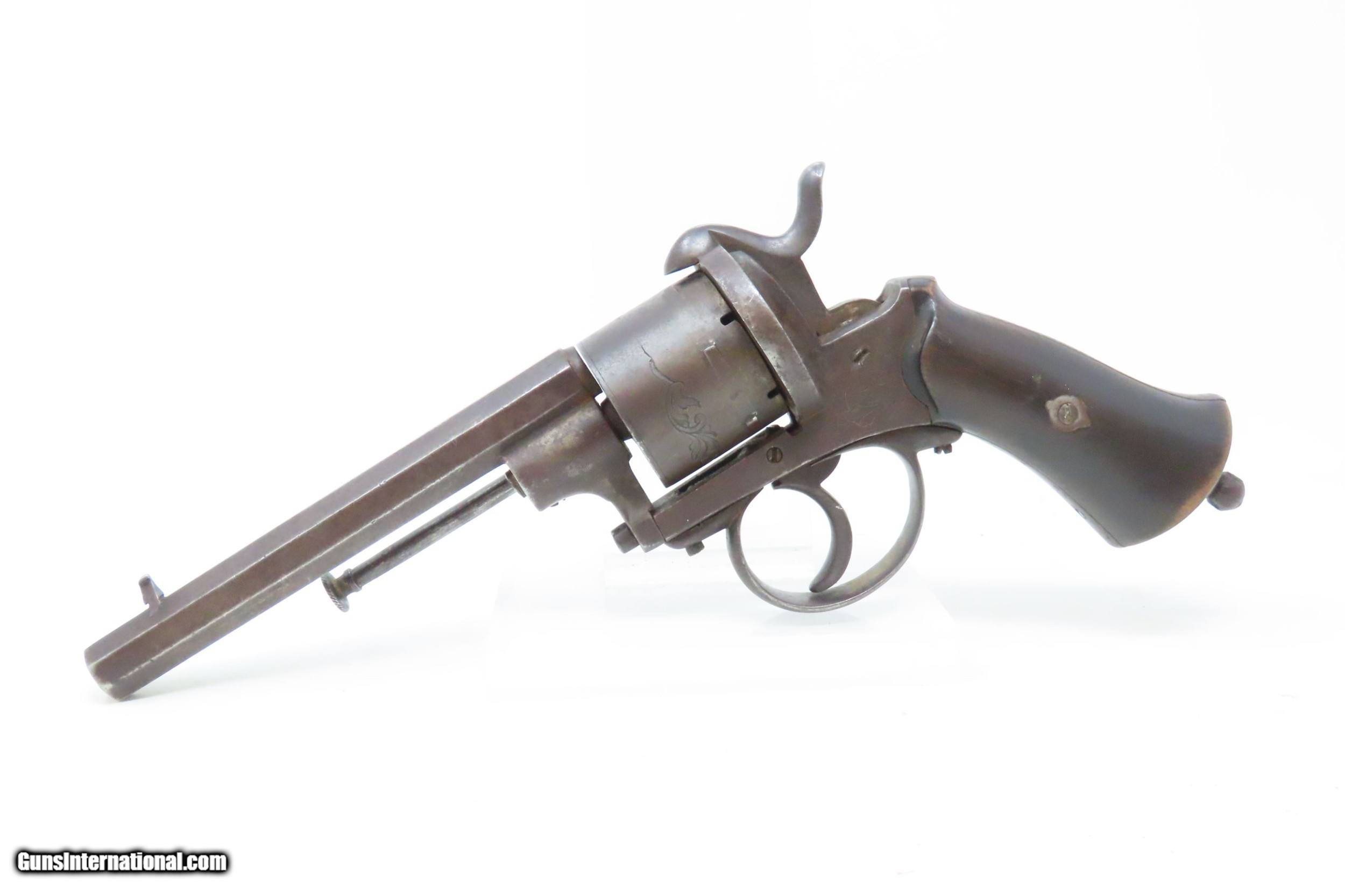

The cylinders were generally smooth in their overall finish.

The weapon made use of a six-round rotating cyclinder with integrated rammer positioned ahead and under the barrel, offset to the right side and used in clearing spent cases from their chambers. Design of the Model 1854 was quite conventional and included a well curved wood-covered grip, recurved tang under the trigger loop (allowing two fingers to be positioned at the trigger area) and standard octagonal or rounded barrels of six inches in length. One such creation became the Model 1854 revolver which saw combat in many period clashes including the American Civil War (1861-1865) - joining a plethora of handguns to see service in the conflict.

Lefaucheux's son, Eugene Lefaucheux, took to the family business and made his own name by developing several firearms to utilize his father's creation to the fullest. By 1840, the pinfire cartridge was in widespread use throughout Europe, adopted by several of the world powers there including France, Italy and Spain - and improved through an 1846 patent by Houllier of Paris. The pinfire system revolved around use of a metallic brass case with the included priming compound being ignited by a striking pin mounted directly to the cartridge base itself - this pin being struck by the hammer of the gun in the usual way. Frenchman Casimir Lefaucheux developed the "pinfire" metallic cartridge from the late 1820s into the 1830s before patenting his creation in 1835.


 0 kommentar(er)
0 kommentar(er)
